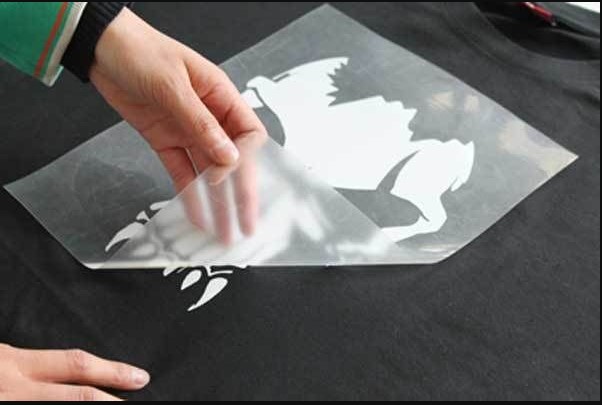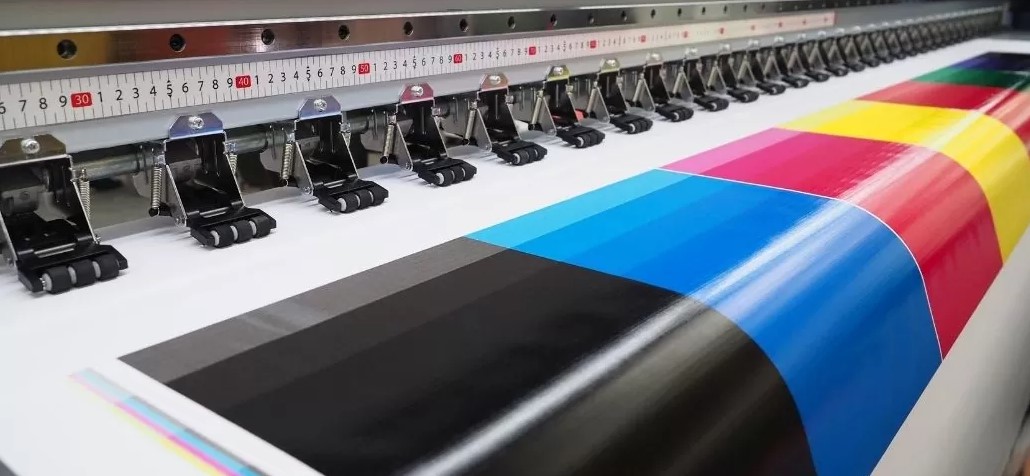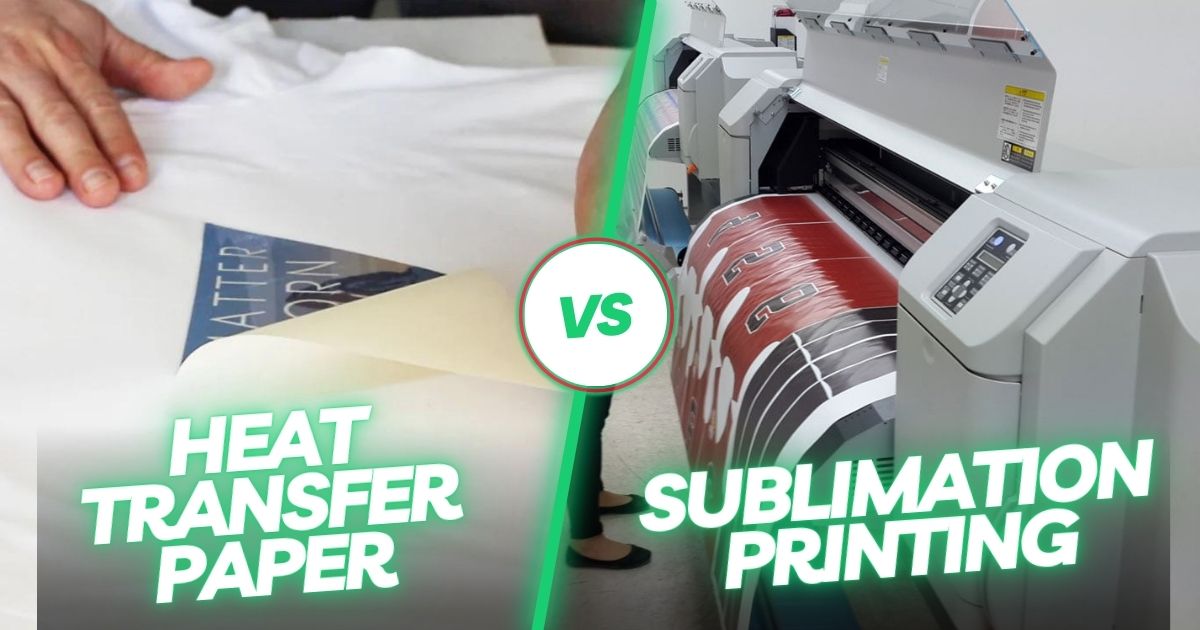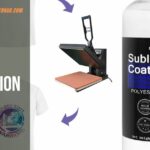Here is a list of things to help you differentiate between heat transfer and sublimation printing and decide which of these is better for you.
Trying to get into the art of customization but still confused about what methods to use? I totally get you. Customized goods and fabrics have become such a trend nowadays, but it’s hard to choose which method gets you the best results. Well, don’t you worry about that anymore? I have you covered. I have been trying out different printing methods and can tell you some key points to help differentiate one from the other.
Apart from the difference in procedures, differences can also be observed in their results. But since different people are looking for different outcomes depending on their preferences, the choice of the printing process can be highly subjective. Among these different processes, the two most prominent ones are heat transfer Paper printing and Sublimation Printing. Here we will compare these two to help you decide which method will work better for you.
Heat Transfer Paper vs. Sublimation Printing
Heat Transfer Paper Printing
As the name indicates, this process includes the use of the transfer paper in the process. So the process starts when you select a design of your choice. This could be anything from an animation to a quote or even a cartoon. This design is first inked into the transfer sheet. This is a special kind of paper that is used particularly for heat transfer printing.
Next, what you gotta do is select a fabric of your choice. Usually, t-shirts are printed, but you can also do hoodies and sweatshirts as these are trending nowadays. The design is then pressed into the fabric using a heat press. Once the design is transferred onto your clothing, there you have it! Your very own customized garment!

Sublimation Printing
Sublimation printing is similar in most steps of the process to heat press printing. Firstly The design of your choice is inked onto the printing sheet. This sheet is then pressed onto the product of your choice to transfer the print. On removal of the sheet, you will get the finished product. However, there’s a slight difference in the science of how this mechanism works.
The process of sublimation is used for this printing process, as the name indicates. As the ink consists of solid particles of the dye, these evaporate into a gaseous form on heating. When these particles hit the material’s surface, the dye is deposited onto it. The result is a clear and vibrant image of the design as per your customization desire.

Differences
Now that you know exactly what these processes do let’s look at the major difference between these two. These differences don’t necessarily make one method better than the other. The superiority of either one depends on which one you personally like better.
Costs of Startup and Equipment
If you’re starting from scratch, you definitely need to start by buying yourself all the necessary equipment for the processes. Firstly talking about the heat press printing, you should know that this is undoubtedly the cheaper procedure out of the two. All you need to buy to get started is a heat press, transfer paper, and a vinyl cutter.
Additionally, you also require an inkjet or laser printer and your choice of fabric, but most people already own these. If you don’t own an inkjet printer already, the Epsom brand offers some high-quality products to benefit you in the long run. As far as the heat press is concerned, the Hobbyists Heat Press, which comes at around 300 dollars, is one of the best choices.
Compared to this, sublimation printing also requires similar products, i.e., sublimation paper, a sublimation printer, and a heat press. The additional sublimation equipment tends to add to cost. Moreover, for sublimation printing, you also require the use of computer software for the creation of the design. People who don’t already have designing software must purchase this, adding to the overall costs.
if you are looking for a sublimation printer you can read our buyer guide about the best sublimation printer.
Fortunately, very recently, these sublimation charges have also started reducing. With time, new and advanced technology is bringing in better and affordable machines into the market. Similarly, many shops offer bundles of multiple products needed for sublimation to decrease overall costs. For example, high-quality packages like the Sawgrass Virtuoso SG400 are available in the market at highly affordable prices.
Quality and Durability
Now you must be wondering that a price difference must mean a difference in quality as well. Well, you are absolutely right! The major difference between these two processes is that the heat press inks the design on top of the fabric. Although some high-quality heat printing machines will make it less obvious, you can feel the embossed printing on most of the fabrics inked using this process. Now, of course, this also means this design is less likely to last very long.
On the other hand, sublimation makes the ink a part of your product. You don’t just paste the ink onto the material. Rather the surface completely absorbs the particles. Of course, this means better quality and a durable finish. So for those looking for a long-lasting design from their print, the sublimation method is definitely worth the price.
Printable Materials
The heat transfer method is a clear winner when it comes to the fabric category. Whether the fabric is cotton, polyester, or any other blends, you can use the heat press printing to get your favorite pieces of clothing customized in no time. Whether these are light or dark-colored, the design will show perfectly. On the other hand, sublimation printing has some restrictions when it comes to choosing the perfect fabric. This process is only workable on 100% polyester fabrics.
Moreover, the clothing articles should also be the light color to show a vibrant outcome. You might be thinking this makes the heat press method a more versatile option and the obvious leader. But here’s the real deal. The sublimation method doesn’t only work for fabrics, though.
In fact, sublimation works for a range of other products like metal, wood, and even ceramics as long as they have a polyester coating. Suppose that’s not the case. In this scenario, you can find various brands in the market offering sublimation coatings, sprays, or liquids. So basically, you can print anything by covering your favorite objects with polyester coatings.
Color Transfer Options
When you use the sublimation process, you will get the exact colors on your design as required. The full printing of the copies makes it a superior option for those who prioritize their designs’ color quality. For example, many companies require a specific shade of color for printing their logo. In this case, sublimation printing is clearly the better option.
On the other hand, the heat transfer method may not give you the same color quality. Therefore this is generally a better option for those looking to do some leisure printing. Different animations and cartoons usually do not require prints of particular color shades on the products. Hence this is a cheaper alternative for those looking forward to customizing their favorite products.
Weeding
When you use sublimation for your printing process, the process is rather simple. There’s no need for any extra trimming because you easily peel off the transfer paper. On the other hand, heat transfer printing does not work this easily. In this case, you must trim the transfer paper properly to give a neat finish.
In darker fabrics, trimming around the edges is necessary; otherwise, the white fabric appears to give an untidy look. On the other hand, for light-colored garments, this may not be an issue. This is because of the color of this paper blends into the fabric.
However, another problem that comes with the excess paper is that its feel can be irritating for most people; therefore, it is better to give it the right trim either way. If this seems like too much of a fuss, you may be able to avoid this trimming process using a different heat transfer paper. For example, the Forever Laser Dark is a two-step transfer paper that is self-weeding.
FAQs
Which is better, heat transfer or sublimation?
Heat transfer is a better option when you’re looking to customize clothing items. However, sublimation is more versatile in its range of materials that you can print.
What is the difference between a heat press and a sublimation heat press?
The most prominent difference between the two is lasts long. The sublimation process engraves the ink into the material, whereas heat transfer prints the ink onto the top, making it less durable than sublimation.
What kind of printer do you use for heat transfer paper?
This depends on the kind of transfer paper you use. We use laser printers for the laser transfer paper, whereas the inkjet printer for the inkjet transfer papers.
if you want to read in detail about what is sublimation printing and how does it work you can read the printing experts’ guide.
Wrapping Up
Now that you know everything that makes heat transfer printing different from sublimation printing, it will be easier for you to decide between heat transfer and sublimation printing. In the end, neither of them is better than the other. Your purchase should solely depend on your requirements and what material and designs you plan to incorporate in your customization. After all, both of these are amazing methods that will give you the perfect customized goodies for you to treasure forever!







